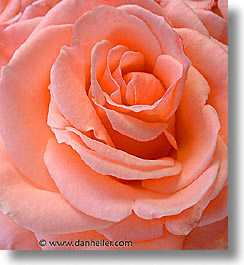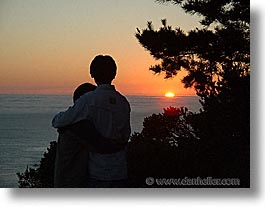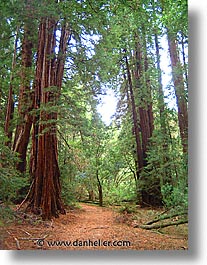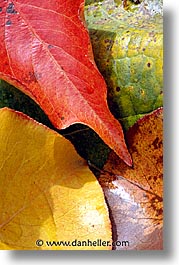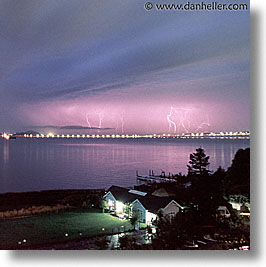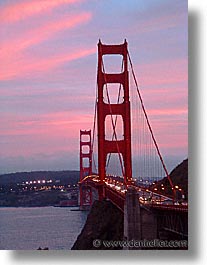|
Markers indicate locations for photos on this page.
Accuracy responsibility of Google Maps
Google Map Goes Here
If you see this text, the map is still loading (or there's an error). |
The discussions that follow will address the main overview points to think about when considering cameras to buy. I do not review specific camera models, brands, or make any other recommendations. However, you should glean valuable information from this page so you can make better sense of the reviews that you see from other sources. For a far more in depth look at the topic, look at www.dpreview.com.
If you're a non-professional photographer and you just want to get fun pictures for the vacation, the point-n-shoot camera is for you. Despite the fact that I own an expensive, professional-level digital camera (see "professional" section below), I also enjoy using the simple consumer point-n-shoots—they're light, simple, and get the job done. Just about any brand, make and model is technically suitable, but you should still test them yourself for personal tastes. Determining which brand is best for you requires two things: learning about what to look for (which is why you're here, right?), and trying them out at a store. Like any other expensive electronic object, never buy something you don't actually put in your own hands. Also, never base a purchasing decision on a feature you don't understand, or know why you need it. The most important factor in deciding what camera to buy is visualizing how you'd use it on a day to day basis. You may think you're just going to point and shoot, but there's more. How quickly does it "shoot" from the time you press the button? This is the most annoying factor that people complain about with their cameras. The time is takes for you to press the button and when the picture is actually taken, the child's facial expression can change, or the dancers may have moved.
You just may use them later, and there's probably a good reason that any given feature is there.
Since you can't get everything in one product, don't sweat it if something seems like it might be a problem. Draw upon past experiences of what you like and don't like about the picture-taking process to determine if what you're used to will map over to digital photography well.
Some people often complain that photos are not sharp, that they are often washed out or under- or over- exposed. Nine times out of ten, this is not the camera's fault—it's the human's fault for not using it properly. For more discussion, check the page, Why do some prints just look awful?.
There are basically three technical factors associated with the camera's
digital sensor that you should consider: resolution, dynamic range,
and memory.
Most consumer-level digital cameras these days range from 5 to
8 megapixels, which will be obsolete by this time next year, I'm
sure. What these numbers indicate is the total number of "pixels"
(the dot that reprepsents a color) in an image. These days, any
consumer digital point-n-shoot camera has enough megapixels to
make good prints. So, you aren't necessarily looking for quanitity
in your resolution. Instead, you want quality, which brings us to
the next point:
When it comes to both dynamic range and actual megapixel count, the thing to remember is that your camera can't achieve its own optimal potential unless the camera's resolution is set to its highest resolution setting. The most common mistake people make is setting their camera to shoot at low resolution (small size) to save on memory so they don't fill up their one and only memory card on a vacation. The reasoning is obvious: one can double or triple the number of pictures a single card can hold using this method. The result, however, is bad-looking prints. (If you're shooting for computer use only, then shooting at low resolution is fine, but more often than not, people think they're only shooting for the web, but end up realizing they want to make a print, and then regret not having used a higher resolution setting.)
Different lighting conditions produce different values for how the camera perceives colors. Most cameras have an auto-balancing mode that senses the colors in the scene to estimate probable color values. (They do this using a method called, "white balancing", which is an oversimplification for this discussion.) Some cameras allow you to manually set the lighting conditions (such as sunny, cloudy, sunset, indoor light bulbs, fluorescent lights, etc.), or you can set the white balance based on a given picture that you've just taken (say, of a white piece of paper). This is getting into modes that most consumers don't want to have to deal with, and which explains one of the many menu items you'll see when you start evaluating your "futz factor tolerance levels." Almost no one will ever futz with the white balance, despite the fact that it's a great feature. For example, if you are shooting a sunset, and you set the white balance to "cloudy," then your sunset will be really warm and gorgeous. Sure, it'll be good on a the normal setting, but it'll be just that much better on the cloudy setting. Are you ever going to do this? Probably not. Most people don't care enough, and if they did, they wouldn't be buying point-n-shoot cameras. But, it's there!
For many people, a memory card of 512M is enough for a good week-long trip shooting at high resolution, suitable for making nice-looking prints. The price of memory is coming down every day, and even today's prices means that you usually only need one memory card. I would recommend no less than a 1-gigabyte card, simply because they're a one-time expense (unlike how film used to be), and this can probably last the duration of a major vacation.
What you don't want to happen (but always does), is you run out of
memory, and then frantically review all your other pictures, trying
desparately to figure out what you delete, in order to free up enough
memory to shoot more. While this does hone your editing skills, and it's
good to get rid of bad pictures, it's far better to simply have more
memory cards with you. I have no recommendations for how much memory is
appropriate. If you go nuts with a camera, you'll know in pretty short
order whether you need to buy more. After you "download" the pictures
to your computer, or at the photo lab to print pictures, you can erase
the card and you can shoot again. It also helps that you can preview
images and remove unwanted pictures right away, freeing up more space on
your card as time goes on.
Any digital camera today can take perfectly good pictures. The deciding factors have nothing to do with camera quality, and everything to do with personal preferences and aesthetics. For example, many people feel that weather-proofing is important—in fact, many underwater digital cameras make perfect everyday cameras as well, so if you ever shoot while snorkeling or want to take it the beach of pool, that may be another important consideration. The most important thing you can do is personal research on the net, and then go to stores and play (for hours) with different models to see what you like and don't like. Be wary of sales people (or anyone) that tries to push you into a particular brand or model. There is never a simple, easy solution that is custom-made for you. The most helpful people are those who try to explain differences without trying to talk you into anything.
Click to recommend this page: |
|

